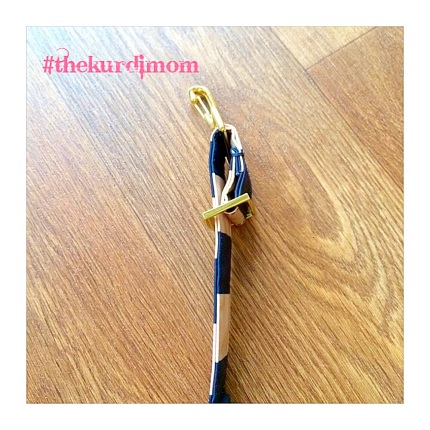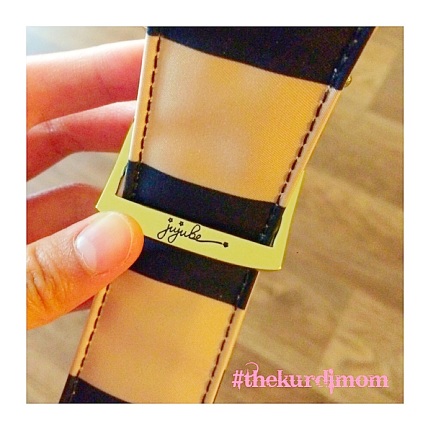I have always encountered discussions regarding how culture impacts breastfeeding decision-making. I therefore decided to make a mini literature review of the current research regarding the topic. I do not pretend that I am knowledgeable regarding this very complex topic. This paper is also NOT PUBLISHED IN ANY JOURNAL ARTICLES. This is only written by a mom who loves research and decided to make an informal research paper.
To What Extent do Maternal Culture Affect Breastfeeding Decisions and Outcomes?
Abstract
The author conducted a literature search regarding breastfeeding outcomes within the context of maternal culture. The author categorized her findings based on geographical location and ethnic identity—Middle Eastern, Asian, and African. The mini literature review revealed complex and at times contradicting beliefs within a specific culture. Another recurring theme that was consistently mentioned amongst the diverse cultures is the misconception regarding colostrum. The author aims that the literature findings will facilitate future Canadian research endeavors focusing on the breastfeeding implications amongst diverse cultures. Furthermore, the author aims that through this paper’s findings, a culturally competent care will be implemented in the health care setting.
Keywords: breastfeeding, culture, Middle-Eastern, Asian, African, literature review
Taber’s medical dictionary defines breastfeeding as “the giving of mother’s milk to a newborn, infant, or child” (Venes, 2005, p. 312-314; p. 555). Breastfeeding benefits include provision of a “balanced nutritional content,” protection against gastrointestinal and respiratory problems, promotion of overall development, mother-infant attachment, and promotion of uterine contractions post-childbirth (Kramer et al., 2008, p. 578-584; Premani, Kurji, & Mithani, 2011, p. 1-10; Thomas, Williams, & Hartmann, 2010, p. 86-90). Culture, on the other hand, is defined as the shared “attitudes, beliefs, [and] customs” (Venes, 2005, p. 312-314; p. 555). As Canadian society becomes increasingly multicultural, the need for a culturally competent health care becomes apparent in order to address the needs of diverse cultures in terms of breastfeeding decisions and behaviours.
The aim of this paper is to provide and educate health care professionals and the public regarding the complexity of cultural practices and beliefs in relation to breastfeeding decision-making and behaviours. The author reviews relevant research literature and analyzes breastfeeding within the context of Middle-Eastern, Asian, and African Cultures. The author focused her mini literature review upon the following research question: “To what extent do maternal culture affect breastfeeding decisions and outcomes?”
LITERATURE REVIEW
The author classified the research literature findings into three subcategories—Middle-Eastern, Asian, and African—based on geographical location and ethnic identification.
Middle-Eastern
Jessri, Farmer, and Olson (2013) define individuals of Middle-Eastern descent as “those born and raised in one of the countries located in the Persian Gulf” (p. 43). Middle-Eastern culture is prevalently Muslim and Islamic teachings are deeply influential regarding breastfeeding behaviours (Jessri, Farmer, & Olson, p. 41-56). These beliefs and practices include the command to breastfeed for two years, waiting for three calls of prayer before breastfeeding initiation, cessation of breastfeeding when pregnant, and practice of hiring a wet nurse (Demirtas, Ergocmen, & Taskin, 2011, p. 1109-1118; Jessri et al., 2013, p. 41-56). Furthermore, Middle-Eastern culture tends to be family-oriented and patriarchal resulting in having multiple generations living within one household, a strong reliance on familial advice, and a risk for breastfeeding mothers becoming burdened with household tasks while trying to find balance with breastfeeding the infant (Jessri et al., 2013, p. 41-56). Due to communal households, breastfeeding becomes difficult due to modesty issues facilitating mothers to supplement (Demirtas et al., p. 1109-1118; Renzaho & Oldroyd, 2013, p. 1-12).
These practices have both the potential of positive and negative outcomes. Positive outcomes include the extended duration of breastfeeding and availability of a wet nurse to breastfeed the infant if the mother is unable to do so. The wet nurse can be anyone in the family or within the community that is willing to breastfeed the infant while the mother is busy accomplishing household tasks. In the event of a lack of wet nurse within the community, a milk bank can be established and utilized though it does need rigorous testing and abundance of mothers willing to donate their breast milk. However, the utilization of milk bank can be tricky within Middle-Eastern culture since Islamically the milk donor’s infant and the infant receiving donor’s milk are considered milk siblings. The milk siblings are not allowed to marry so utilization of milk banks are more than likely avoided my Middle-Eastern mothers due to these possible issues. On the contrary, delayed breastfeeding initiation due to observance of the prayers or household chores obligations can result in an increased risk of maternal breast milk insufficiency and colostrum depletion (Thomas et al., 2010, p. 86-90). Additionally, multi-generational households can potentially have a positive effect regarding breastfeeding attitudes, initiation, and continuation. On the other hand, mothers may end up supplementing early due to breastfeeding inappropriateness in front of other family members. Middle-Eastern breastfeeding mothers needs to be provided with familial support in terms of household obligations, as well as, being educated on the health benefits of early breastfeeding initiation.
Asian
According to Chen (2010), Chinese cultural beliefs and practices seek harmony between maternal and infant health (p. 1021-1029). These include the belief of breast milk purity, resting post-childbirth to regain vitality, as well as, positive attitudes with breastfeeding (Chen, 2010, p. 1021-1029). Renzaho and Oldroyd (2013) further states that within Chinese culture, traditional medicines are used to reduce pain and stimulate breast milk production (p. 1-12). Emphasis on maternal health are shared among Chinese, Vietnamese, and Thai cultures involving practices such as resting, tonic soup consumption, steam baths, and massages (Chen, 2010, p. 1021-1029; Schmied et al., 2012, p. 1-15). Furthermore, these cultures also allow women to discontinue breastfeeding when they fear that they are “losing heat” and are too ill to breastfeed (Schmied et al., 2012, p. 1-15).
Amidst prevalent beliefs regarding the psychological benefits of breastfeeding, barriers such as difficulty to breastfeed due to embarrassment and roles as a daughter-in-law contribute to breastfeeding discontinuation among some South Asian cultures (Choudhry & Wallace, 2012, p. 72-87; Schmied et al., 2012, p. 1-15; Twamley, Puthussery, Harding, Baron, & Macfarlane, 2011, p. 595-602). Furthermore, the benefits of colostrum are contradictory among Asian cultures; Thai culture believes that colostrum gives immunity while Pakistani and Indian culture discards it due to the belief of colostrum rancidity (Schmied et al., 2012, p. 1-15). Moreover, Hirani and Premji (2009) states that feeding the infant boiled honey and water instead of colostrum are prevalent among Pakistanis (p. 18-24). Based on these findings, there is a need for education regarding colostrum benefits and the botulism risk present with honey introduction.
As the literature reveals, Asian cultural breastfeeding practices and beliefs are complex and varies from country of origin. A facilitator of breastfeeding within Asian cultures includes the understanding of breast milk benefits while barriers include greater emphasis on maternal health, the cultural norm of maintaining modesty, and colostrum misconceptions. Furthermore, there is a need for education regarding the consequences of introducing honey to infants and risk of developing botulism. Additionally, a balance between promoting maternal health needs and breastfeeding benefits to both mother and infant needs to be emphasized.
African
According to Renzaho and Oldroyd (2013), African women were given maize porridge and beer derived from sorghum to promote lactation (p. 1-12). This finding supports Steinman et al. (2010) who states that Somali mothers are encouraged to drink a lot of fluids such as, tea with milk and goat soup to promote production of breast milk (p. 67-88). The researchers revealed that Somali mothers tend to breastfeed for a year and find breastfeeding soothing to the infant, preventing nighttime sleep disturbance (p. 67-88). Literature findings pertaining to Somali beliefs about colostrum are mixed but the majority share a strong opposition regarding breastfeeding if it has stayed in the breast for hours. Furthermore, supplementation is also encouraged and practiced especially when there is a perceived milk insufficiency. A cause of concern is a Somalian practice of administering honey into the infant’s lips and gums amidst risk of botulism in which majority was unaware of (Steinman et al., 2010, p. 67-88).
Infant grandmothers in Malawi are influential breastfeeding and food introduction decision makers. Common foods introduced to infants under six months includes: “mzuwula (root infusion), water, dawale (herbal infusion), and porridge”. “Mzuwula” is given to prevent infants against “moto” which is an illness identified only by the grandmothers and elders within the village. Supplementation is introduced to infants due to the grandmother’s perceived maternal milk insufficiency. Furthermore, a prevalent Malawi belief is when an infant cries after childbirth, the infant is believed to have a stomachache and is given “dawale” and porridge (Kerr, Dakishoni, Shumba, Msachi, & Chirwa, 2008, p. 1095-1105).
African cultural practices raise alarming concerns particularly the early introduction of supplementation such as a root extract and porridge which could have negative effects on infant health. Cultural beliefs regarding these supplementations needs to be further explored and if possible an alternative could be promoted without risking harm to the infant. Additionally, education regarding the consequences of these supplementations on infant health outcomes needs to be emphasized in a culturally sensitive manner. On the contrary, the prevalent African cultural postpartum maternal care of administering fluids should be noted as a positive behaviour that promotes lactation and should be encouraged. In addition, familial influence, particularly infant grandmothers, is prevalent and should therefore be included in breastfeeding teaching.
GAPS IN RESEARCH
The author identified the following as gaps in research: lack of Canadian literature focused on cultural impacts of breastfeeding, lack of literature regarding East Indian, Filipino, and other African nationalities in relation to breastfeeding behaviours, and lack of an intervention-focused literature regarding breastfeeding within the context of culture.
RECOMMENDATIONS
The author recommends the following practices to address cultural diversity in terms of breastfeeding as follows: provision of culturally competent health care with a focus on increasing cultural awareness; inclusion of family members, particularly the husband and mother-in-law during post-partum care; implementation of a shared maternal and infant health emphasis; provision of the benefits of colostrum during teaching; and teaching breastfeeding information through the use of interpreters, pictograms, and pamphlets in various languages.
CONCLUSION
This mini literature review revealed that maternal culture has a multifaceted effect on breastfeeding decisions and outcomes. It identified some cultural facilitators and barriers on breastfeeding decisions and outcomes. Findings were categorized according to ethnic identification—Middle-Eastern, Asian, and African. Middle-Eastern culture revealed a practice of an extended breastfeeding duration however supplementation is also common due to communal household dynamics and difficulty in balancing household tasks with infant care. Some Asian cultures practiced a maternal emphasis on postpartum care. Furthermore, colostrum understanding was contradictory for both Asian and African cultures. Amidst the promising breastfeeding support prevalent in African cultures, there are concerning health hazards that were noted particularly early supplementation of herbal concoctions that could pose a health risk to the infant. In conclusion, this study identified several gaps in the literature including a lack of Canadian literature focused on breastfeeding outcomes within a cultural perspective as well as in depth exploration of breastfeeding practices in other nationalities. The author recommended the utilization of this paper as a starting point towards implementation of culturally competent care through cultural breastfeeding norms awareness and inclusion of extended family members as integral part of the breastfeeding journey. Additionally, in depth research regarding the implications of often contradictory breastfeeding knowledge and practices should be further explored in order to find a balance between respecting cultural background with ideal maternal and infant health outcomes.
REFERENCES
- Chen, W. (2010). Understanding the cultural context of Chinese mothers’ perceptions of breastfeeding and infant health in Canada. Journal of Clinical Nursing, 19, 1021-1029. doi: 10.1111/j.1365-2702.2009.02956.x
- Choudhry, K. & Wallace, L. M. (2012). ‘Breast is not always best’: South Asian women’s experiences of infant feeding in the UK within an acculturation framework. Maternal and Child Nutrition, 8, 72-87. doi: 10.1111/j.1740-8709.2010.00253.x
- Demirtas, B., Ergocmen, B., & Taskin, L. (2011). Breastfeeding experiences of Turkish women. Journal of Clinical Nursing, 21, 1109-1118. doi: 10.1111/j.1365-2702.2011.03848.x
- Hirani, S. A. & Premji, S. S. (2009). Mothers’ employment and breastfeeding continuation: Global and Pakistani perspectives from the literature. Neonatal, Paediatric, and Child Health Nursing, 12(2), 18-24.
- Jessri, M., Farmer, A., & Olson, K. (2013). Exploring Middle-Eastern mothers’ perceptions and experiences of breastfeeding in Canada: An ethnographic study. Maternal and Child Nutrition, 9, 41-56. doi: 10.1111/j.1740-8709.2012.00436.x
- Kerr, R., Dakishoni, L., Shumba, L., Msachi, R., & Chirwa, M. (2008). “We grandmothers know plenty”: Breastfeeding, complementary feeding and multifaceted role of grandmothers in Malawi. Social Science & Medicine, 66, 1095-1105. doi: 10.1016/j.socscimed,2007.11.019
- Kramer, M., Aboud, F., Mironova, E., Vanilovich, I., Platt, R., Matush, L., … Shapiro, S. (2008). Breastfeeding and child cognitive development: new evidence from a large randomized trial. Archives of General Psychiatry, 65(5), 578-584.
- Premani, Z., Kurji, Z., & Mithani, Y. (2011). To explore the experiences of women on reasons in initiating and maintaining breastfeeding in urban area of Karachi, Pakistan: An exploratory study. International Scholarly Research Network Pediatrics, 1-10. doi: 10.5402/2011/514323
- Renzaho, A. M. & Oldroyd, J. C. (2013). Closing the gap in maternal and child health: A qualitative study examining health needs of migrant mothers in Dandenong, Victoria, Australia. Maternal and Child Health Journal, 1-12. doi: 10.1007/s10995-013-1378-7
- Schmied, V., Olley, H., Burns, E., Duff, M., Dennis, C., & Dahlen, H. (2012). Contraindications and conflict: A meta-ethnographic study of migrant women’s experiences of breastfeeding in a new country. BMC Pregnancy and Childbirth, 12(163), 1-15. doi: 10.1186/1471-2393-12-163
- Steinman, L., Doescher, M., Keppel, G., Pak-Gorstein, S., Graham, E., Haq, A., Johnson, D., & Spicer, P. (2010). Understanding infant feeding beliefs, practices, and preferred nutrition education and health provider approaches: An exploratory study with Somali mothers in the USA. Maternal and Child Nutrition, 6, 67-88. doi: 10.1111/j.1740-8709.2009.00185.x
- Thomas, E. C., Williams, T. M., & Hartmann, P. E. (2010). Lactation and mother’s milk: Recent advances in understanding. Infants, 6(3), 86-90.
- Twamley, K., Puthussery, S., Harding, S., Baron, M., & Macfarlane, A. (2011). UK-born ethnic minority women and their experiences of feeding their newborn infant. Midwifery, 27(5), 595-602.
- Venes, D. (2005). Taber’s cyclopedic medical dictionary (21st ed.). Philadelphia, USA: F. A. Davis Company.














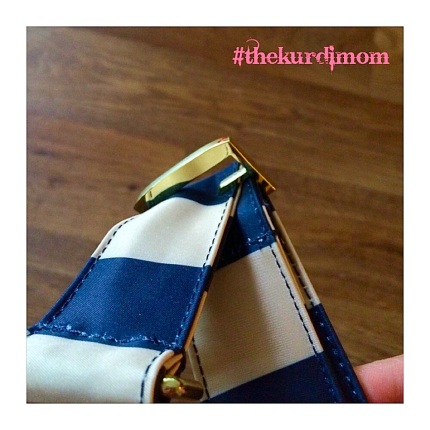
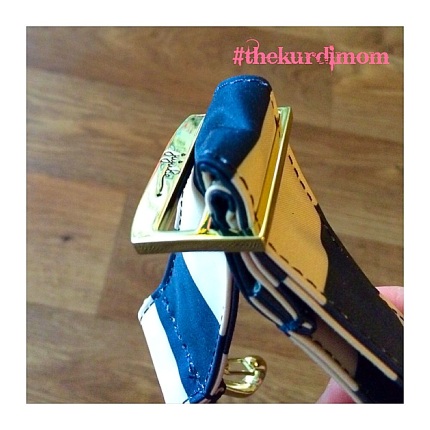 2) You would then do the same on the other end. Here is a pic of both sides being folded in order to be able to remove the strap adjuster from being attached to the strap.
2) You would then do the same on the other end. Here is a pic of both sides being folded in order to be able to remove the strap adjuster from being attached to the strap.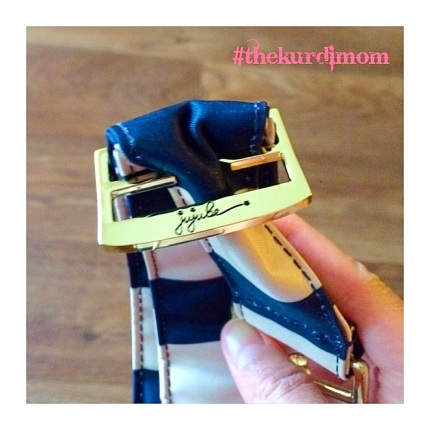 3) Then just slide the strap adjuster until fully out of the strap. Here is what the strap adjuster looks like. I have not encountered strap adjusters not being connected on all ends. This design is absolutely genius and I love that it can be done. No more having to worry about exchanging a messenger strap and waiting for days for the a new strap to arrive. As you can see in the picture below, my strap adjuster was located on the other end of the strap hence it can only go to a certain length due to the strap pads blocking its way.
3) Then just slide the strap adjuster until fully out of the strap. Here is what the strap adjuster looks like. I have not encountered strap adjusters not being connected on all ends. This design is absolutely genius and I love that it can be done. No more having to worry about exchanging a messenger strap and waiting for days for the a new strap to arrive. As you can see in the picture below, my strap adjuster was located on the other end of the strap hence it can only go to a certain length due to the strap pads blocking its way.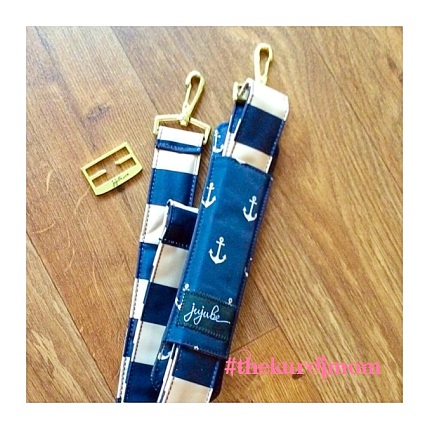 4) Since my hook ring was on the other side of the strap. I had to feed the rest of the strap through the strap pad. Once you looped the strap out of the strap pad, you can then remove the hook ring as shown below.
4) Since my hook ring was on the other side of the strap. I had to feed the rest of the strap through the strap pad. Once you looped the strap out of the strap pad, you can then remove the hook ring as shown below.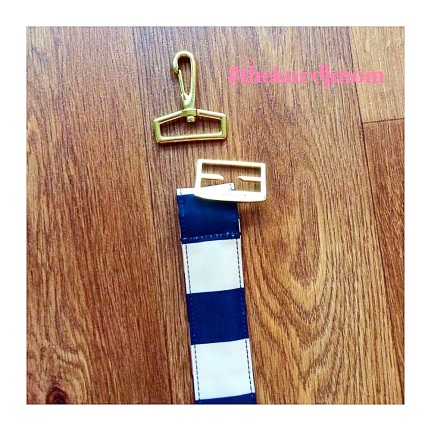 5) You would then insert the strap adjuster first then the hook ring as shown below.
5) You would then insert the strap adjuster first then the hook ring as shown below.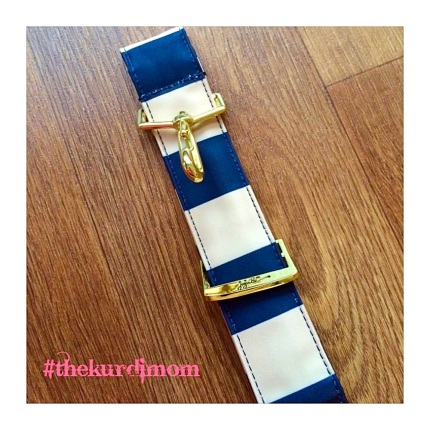 6) Next, you would fold the strap backwards and then connect both open ends of the strap adjuster in the open part of the strap just like how you took it out (refer to #1 and 2) as shown below.
6) Next, you would fold the strap backwards and then connect both open ends of the strap adjuster in the open part of the strap just like how you took it out (refer to #1 and 2) as shown below.